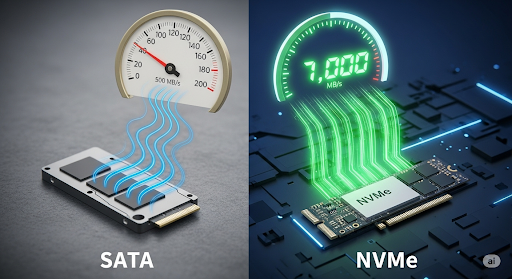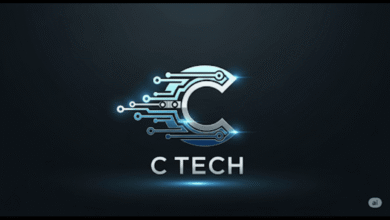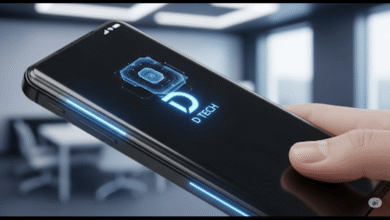4 Terabyte SSD: Storage Powerhouse for Speed and Capacity

In today’s world of high-resolution video, massive game files, and data-hungry applications, storage demands are skyrocketing. The 4 terabyte SSD (solid-state drive) has emerged as a sweet spot for users who need both high capacity and blazing speed. Whether you’re a gamer, video editor, or business professional, a 4 TB offers enough space to breathe and performance to match.
Why a 4 TB SSD Makes Sense in 2025
SSDs have evolved dramatically in the past decade. Once considered a luxury for boot drives, they’ve now replaced hard drives in many systems due to their speed, durability, and efficiency.
A 4 TB SSD offers:
- Ample space for thousands of large files without juggling external drives.
- Fast load times for games and software.
- Reduced noise & heat compared to traditional HDDs.
- Improved reliability due to no moving parts.
Common Use Cases
- Gaming Libraries
Modern AAA games often take up 100GB+ each. A 4 TB SSD can store over 30 large titles without worrying about space. - Video Production
Editing 4K or even 8K footage requires not just large capacity but also quick read/write speeds to avoid lag in the timeline. - Professional Workstations
Engineers, designers, and scientists who work with CAD models, simulations, or large datasets benefit from the extra space and performance. - Server & NAS Storage
In a business setting, 4 TB SSDs can be used for high-performance data storage, especially in media servers or content delivery setups.
SATA vs NVMe: Which to Choose?

When shopping for a 4 TB SSD, you’ll see SATA and NVMe options.
- SATA SSDs:
Cheaper and still much faster than HDDs (up to ~550 MB/s). Best for older systems or budget upgrades. - NVMe SSDs:
Connected via PCIe, delivering speeds up to 7,000 MB/s in Gen4 models. Ideal for next-gen gaming, large file transfers, and heavy workloads.
Popular Models in 2025
- Samsung 990 Pro 4 TB NVMe – Excellent performance for gamers and professionals.
- Crucial T500 4TB NVMe – Balanced price and speed for everyday users.
- Western Digital Black SN850X 4 TB – Strong choice for high-end gaming rigs.
- Sabrent Rocket 4 Plus 4 TB – Good mix of speed, durability, and value.
- Samsung 870 QVO 4TB SATA – Great for those needing large capacity at a lower price.
Average Prices
In 2025, 4 TB SSD prices vary widely depending on the interface and brand:
- SATA 4TB SSD: $200–$300
- PCIe Gen3 NVMe 4TB: $250–$350
- PCIe Gen4 NVMe 4TB: $300–$450
- High-end PCIe Gen5 NVMe 4TB: $450–$600+
How to Maximize Your 4 TB SSD
- Enable TRIM support to maintain long-term performance.
- Keep 10–15% of the drive free for optimal operation.
- Regularly update firmware for stability and performance improvements.
- Avoid unnecessary writes—while SSDs are durable, minimizing excess writes extends lifespan.
Pros & Cons of a 4TB SSD
Pros:
- Huge storage in a single drive.
- Super-fast read/write speeds.
- More reliable than HDDs.
- Energy-efficient and quiet.
Cons:
- Higher cost per gigabyte than HDDs.
- Large NVMe drives may require additional cooling.
- Overkill for casual users who don’t store large files.
Future Outlook
As SSD manufacturing costs drop and newer PCIe standards (Gen5 and beyond) become mainstream, 4TB SSDs will likely become the “new normal” for mid- to high-end PCs. Even budget laptops may start offering 4TB options in the next few years.
FAQs: 4 Terabyte SSD
Q1: Is a 4TB SSD worth it over a smaller size?
A: Yes, if you handle large files, have a big game library, or work with 4K/8K content. For casual browsing and light use, a smaller SSD might be more cost-effective.
Q2: What’s the difference between SATA and NVMe for a 4TB SSD?
A: SATA is slower but cheaper and compatible with older systems. NVMe uses PCIe lanes for much higher speeds—ideal for heavy workloads and modern gaming.
Q3: How long will a 4TB SSD last?
A: Most high-quality SSDs last 5–10 years under normal usage. Lifespan depends on the total terabytes written (TBW) rating, which is often several thousand TB for 4TB models.
Q4: Can I use a 4TB SSD in a PlayStation or Xbox?
A: Yes, but check your console’s compatibility. For example, PS5 requires a PCIe Gen4 NVMe SSD with certain speed and size requirements.
Q5: Should I get one large 4TB SSD or two smaller ones?
A: One large SSD simplifies storage management, but two smaller ones can provide redundancy or separation of system and data drives.
Q6: Does a 4TB SSD improve gaming FPS?
A: Not directly. SSDs improve load times and asset streaming, but frame rates depend mostly on your CPU and GPU.
Q7: Are external 4TB SSDs good for backups?
A: Absolutely. Portable NVMe SSDs can back up large datasets quickly and are easier to carry than bulky HDDs.
Final Thoughts
The 4 terabyte SSD is no longer a niche luxury—it’s becoming a must-have for professionals, gamers, and anyone tired of running out of space. While the upfront cost is higher than smaller drives, the speed, reliability, and storage freedom it provides make it a smart investment for the long run.




